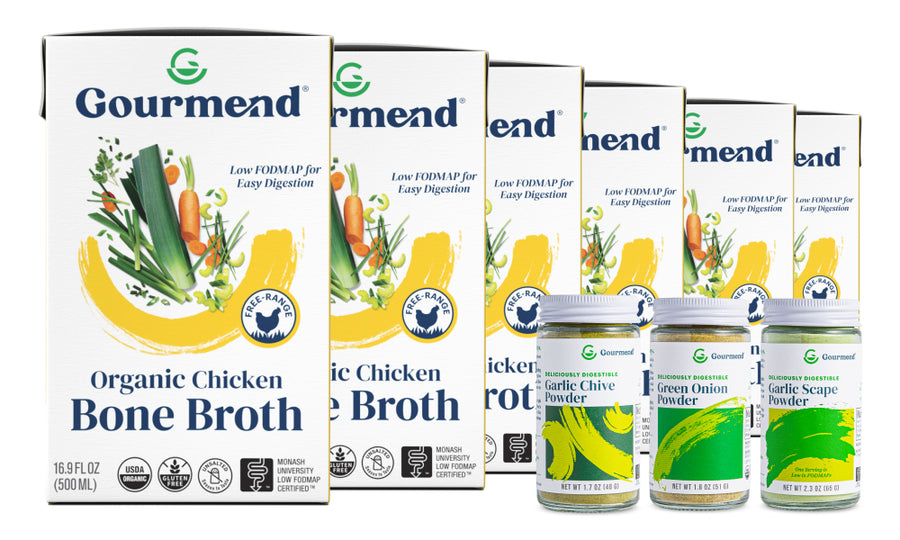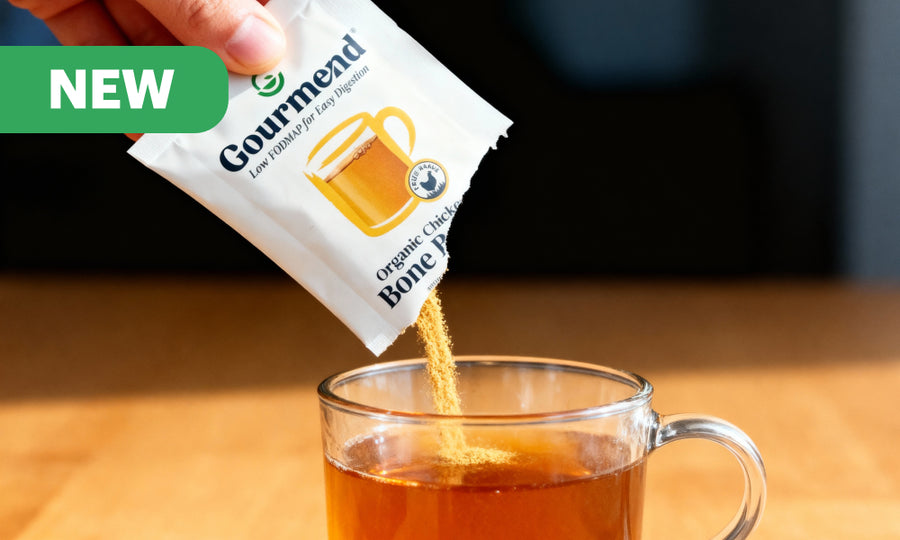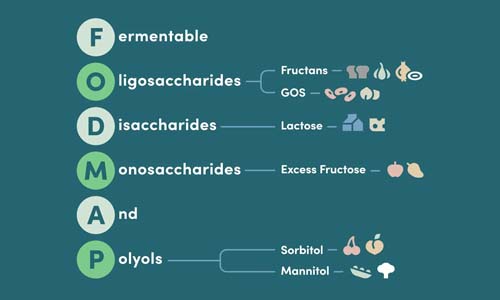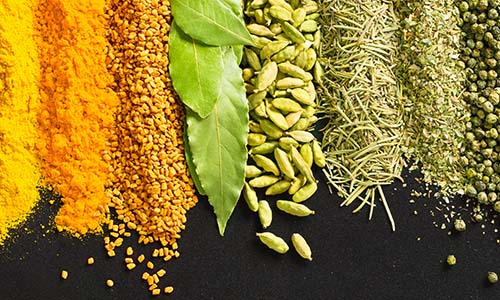Gluten Free Spices: The Ultimate Safe Shopping Guide
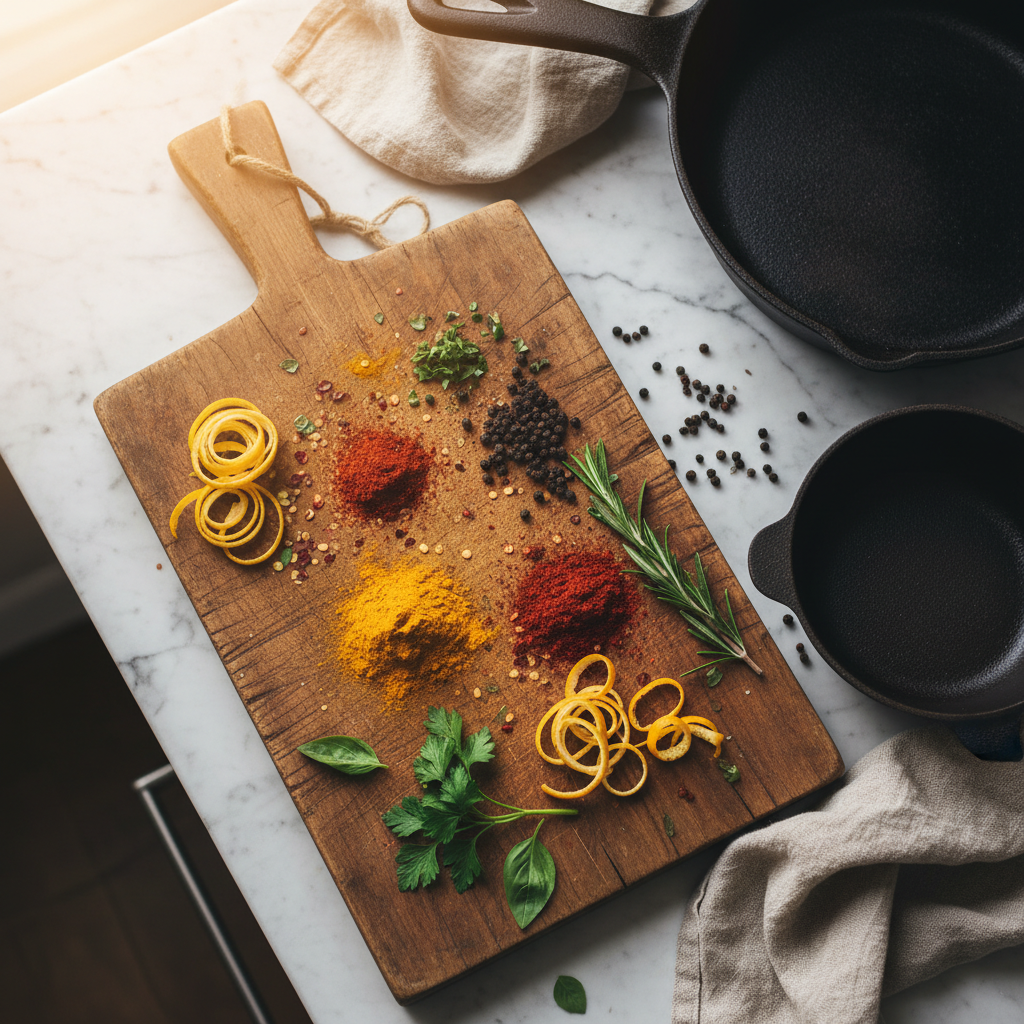
Key Takeaways
- Most single-ingredient spices and herbs are naturally gluten free.
- Cross-contamination and additives can introduce gluten into spices.
- Pure turmeric, cumin, and basil are safe for gluten-free diets.
- Seasoning blends require careful label reading to ensure they are gluten free.
Table of Contents
- What Are Gluten-Free Spices? A Clear Introduction for Home Cooks and Foodies
- The Science of Spices, How Gluten Gets Into Your Seasonings
- Not All Spices Are Equal, Single-Ingredient Spices vs. Spice Blends
- Certified Gluten-Free Spices, How to Decode Labels and Shop Smart
- The Gourmend Difference, Flavor-First, Gut-Friendly, and Certified Safe
- Best Naturally Gluten-Free Spices and Herbs, Recommended by Gourmend
- Blends, Mixes, and Seasonings, Avoiding Gluten Traps Without Sacrificing Flavor
- Specialty and Certified Gluten-Free Spice Brands, What Matters When Buying
- Safe Spice Storage and Kitchen Habits, Keeping Your Gluten-Free Cabinet Truly Safe
- How to Make Your Own Gluten-Free Spice Blends, Empowering Flavor and Safety
- Partnering Flavor and Gut Health, Best Spices for Supporting Digestion on a Gluten-Free Diet
What Are Gluten-Free Spices? A Clear Introduction for Home Cooks and Foodies
Understanding which gluten free spices are safe is essential for anyone managing celiac disease or gluten sensitivity. Most single-ingredient spices and herbs are naturally gluten free, but cross-contamination and additives can introduce gluten into your pantry staples. For a deeper dive into how to select and use these spices safely, you may find this guide on low FODMAP spices bundle for easy cooking especially helpful.
When shopping for spices, always check for clear labeling and certifications. Some brands go the extra mile to ensure their products are safe for those with gluten intolerance. If you're looking for inspiration on how to use gluten free spices in everyday meals, explore these low FODMAP recipes that highlight safe and flavorful options.
For those who want to learn more about the science and safety of gluten-free eating, you can also browse the learn section for additional tips and resources.
The Science of Spices, How Gluten Gets Into Your Seasonings

Contamination occurs at three critical points: harvesting equipment shared with wheat crops, processing facilities that handle gluten-containing products, and packaging lines using wheat-derived anti-caking agents.
The FDA requires products labeled "gluten free" to contain less than 20 parts per million (ppm) of gluten, roughly equivalent to one crumb in a large loaf of bread. This threshold protects most people with celiac disease, but achieving it requires dedicated production protocols.
Common gluten sources in spices:
- Wheat starch - Anti-caking agent in garlic powder and onion powder
- Modified food starch - Thickener that may derive from wheat
- Natural flavors - Can contain gluten-based carriers
- Maltodextrin - Usually corn-based but occasionally wheat-derived
Bulk bins present the highest contamination risk due to shared scoops and airborne particles. Sealed, certified packages from dedicated gluten-free facilities offer the greatest protection for sensitive individuals.
Not All Spices Are Equal, Single-Ingredient Spices vs. Spice Blends
Pure cumin powder contains one ingredient: ground cumin seeds. Taco seasoning might contain fifteen ingredients, including wheat-derived anti-caking agents and "natural flavors" of unknown origin. This fundamental difference determines your gluten-free safety.
| Factor | Single-Ingredient Spices | Spice Blends |
|---|---|---|
| Gluten Risk | Minimal (cross-contamination only) | Higher (additives + contamination) |
| Label Clarity | Simple ingredient list | Complex, requires scrutiny |
| Versatility | Multiple applications | Specific use cases |
| Cost Control | Better value per use | Premium pricing |
Safest single-ingredient gluten free spices for your pantry: turmeric, cumin, paprika, black pepper, cinnamon, oregano, basil, thyme, rosemary, and pure chili powder. These foundational spices build complex flavors without hidden risks.
When choosing blends, scan for "natural flavors", this umbrella term can mask gluten-containing flavor carriers. Stick to brands that specify "gluten-free natural flavors" or list all flavor sources explicitly.
Certified Gluten-Free Spices, How to Decode Labels and Shop Smart
"Certified gluten free" means independent testing verified the product contains less than 20 ppm gluten. Look for symbols from the Gluten-Free Certification Organization (GFCO), NSF International, or similar third-party validators, not just manufacturer claims.
Label reading checklist:
- Scan for certification logos before reading ingredients
- Check facility statements ("processed in a facility that also processes wheat")
- Verify certification dates, expired certifications offer no protection
- Contact manufacturers directly for unclear labeling
"Naturally gluten free" differs from "certified gluten free." The first indicates no gluten ingredients were added; the second confirms testing verified absence of contamination. For celiac disease management, certification provides essential peace of mind.
The Gourmend Difference, Flavor-First, Gut-Friendly, and Certified Safe

Gourmend Foods bridges the gap between bold culinary flavor and digestive wellness, delivering gluten free spices and seasonings that never compromise on taste or safety. Our certified gluten-free broths and seasonings use innovative ingredient substitutions that create depth without digestive distress.
Where traditional recipes rely on garlic bulbs and onion, we harness garlic-chive stems, chive sprigs, and green leek tops for aromatic complexity. Our beef and vegetable broths incorporate nori seaweed and oyster mushrooms for umami richness, ingredients that enhance flavor while supporting low FODMAP protocols and gluten-free requirements.
| Traditional Ingredient | Gourmend Substitute | Flavor Benefit |
|---|---|---|
| Onion bulb | Chive sprigs | Clean onion notes without FODMAPs |
| Garlic cloves | Garlic-chive stems | Subtle garlic essence, gut-friendly |
| Wheat-based thickeners | Pure herbs and spices | Clean flavor without gluten risk |
Every Gourmend product undergoes rigorous testing in dedicated gluten-free facilities, ensuring the 20 ppm safety threshold is consistently met. For comprehensive recipe inspiration using certified gluten-free ingredients, explore our low FODMAP recipes collection.
Best Naturally Gluten-Free Spices and Herbs, Recommended by Gourmend
These foundational gluten free spices form the backbone of flavorful, safe cooking. Each offers distinct culinary applications while maintaining minimal contamination risk when purchased as single-ingredient products.
Essential gluten-free spice collection:
- Turmeric: Earthy, golden warmth perfect for rice dishes and anti-inflammatory benefits
- Cumin: Smoky depth ideal for Mexican, Middle Eastern, and Indian cuisines
- Paprika: Sweet pepper flavor that adds color and mild heat to proteins
- Black pepper: Universal heat and pungency for everyday seasoning
- Cinnamon: Sweet spice for baking, beverages, and warming spice blends
- Oregano: Mediterranean herb essential for tomato-based dishes
- Basil: Bright, peppery notes that complement fresh and cooked applications
- Thyme: Earthy, floral complexity perfect for roasted vegetables and proteins
- Rosemary: Pine-like intensity that transforms simple roasted dishes
- Pure chili powder: Single-chile varieties offer heat without hidden additives
These spices maintain their gluten-free integrity when sourced from reputable suppliers and stored properly. Build your flavor foundation with these essentials before exploring specialty blends. For more information on which spices, seasonings, and herbs are safe, see this comprehensive guide from Beyond Celiac.
Blends, Mixes, and Seasonings, Avoiding Gluten Traps Without Sacrificing Flavor
Commercial seasoning blends pose the highest gluten contamination risk due to multiple ingredients, anti-caking agents, and shared processing equipment. Common culprits include wheat starch in garlic powder, modified food starch as a flow agent, and wheat-derived natural flavors.
Red-flag ingredients on spice blend labels: hydrolyzed wheat protein, wheat flour, wheat starch, modified food starch (unless specified as corn), and ambiguous "natural flavors" without gluten-free confirmation.
Easy Homemade Gluten-Free Taco Seasoning
- 2 tablespoons chili powder
- 1 tablespoon cumin
- 1 teaspoon paprika
Combine thoroughly and store in airtight container for up to 6 months. This blend provides bold Mexican flavors using only certified single-ingredient spices.
Creating custom blends ensures complete ingredient control while delivering superior flavor. Start with base spices you trust, then experiment with proportions to match your taste preferences. Homemade blends eliminate guesswork and often cost less than commercial alternatives.
Safest blend applications: dry rubs for proteins, seasoning for roasted vegetables, flavor bases for soups and stews, and custom curry powders tailored to your heat tolerance. For more ideas on taco blends and safe spice use, check out this article on low FODMAP taco night seasoning and spices.
Specialty and Certified Gluten-Free Spice Brands, What Matters When Buying

Brand selection determines your confidence level when cooking with gluten free spices. Leading manufacturers differ significantly in certification rigor, facility controls, and ingredient transparency, factors that directly impact kitchen safety.
| Brand | Certification Standard | Facility Controls | Transparency Level |
|---|---|---|---|
| Gourmend Foods | Third-party certified, under 20 ppm | Dedicated gluten-free production | Complete ingredient sourcing disclosure |
| Simply Organic | GFCO certified select products | Shared facilities with protocols | Clear labeling on certified items |
| Frontier Co-op | Third-party testing available | Risk assessment protocols | Batch testing documentation |
| McCormick | Internal testing standards | Cross-contamination procedures | Limited gluten-free line disclosure |
Selection criteria beyond basic labeling: Frequency of batch testing, dedicated production lines, supplier verification protocols, and customer service responsiveness to contamination concerns.
Gourmend's approach eliminates uncertainty through comprehensive facility controls and innovative ingredient substitutions. Our seasonings undergo continuous monitoring while delivering restaurant-quality flavor profiles that support both gluten-free and low FODMAP requirements.
Choose brands that provide specific contamination thresholds rather than generic "gluten-free" claims. Request testing certificates when purchasing bulk quantities or introducing new products to sensitive individuals. For more on the gluten-free diet and its requirements, see this overview of the gluten-free diet.
Safe Spice Storage and Kitchen Habits, Keeping Your Gluten-Free Cabinet Truly Safe
Cross-contamination prevention extends beyond purchasing decisions into daily kitchen practices. Proper storage and handling protocols maintain the integrity of your gluten free spices collection.
Essential storage safety checklist:
- Dedicate separate cabinet space away from gluten-containing products
- Use airtight glass containers with clearly marked "gluten-free" labels
- Store in cool, dark locations to preserve potency and prevent moisture
- Clean measuring spoons between different spice containers
- Replace spices every 12-18 months for optimal flavor and safety
Cross-contamination troubleshooting: If flour or breadcrumbs contact your spice containers, discard any open spices that may have been exposed. Clean all surfaces with dedicated gluten-free cleaning supplies before restocking.
Implement a rotation system using purchase dates on container labels. Older spices lose potency and may develop moisture that increases contamination risk. Fresh spices deliver better flavor while maintaining safety standards.
Keep dedicated measuring tools for gluten-free cooking. Even microscopic flour residue on shared utensils can trigger reactions in highly sensitive individuals. This investment in separate tools provides peace of mind and consistent results.
How to Make Your Own Gluten-Free Spice Blends, Empowering Flavor and Safety
Custom blends provide complete ingredient control while delivering complex flavors that rival commercial products. These recipes use only verified single-ingredient spices, ensuring safety without sacrificing culinary impact.
Italian Herb Blend:
- 2 tablespoons dried basil
- 1 tablespoon oregano
- 1 teaspoon thyme
Curry Powder Base:
- 3 tablespoons turmeric
- 2 tablespoons cumin
- 1 tablespoon coriander
BBQ Rub:
- 2 tablespoons paprika
- 1 tablespoon chili powder
- 1 teaspoon black pepper
Combine ingredients thoroughly and store in labeled glass containers for up to 6 months. Start with smaller batches to test flavor preferences before scaling up production.
Blend storage best practices: Use airtight containers, label with creation date, and store away from heat sources. Custom blends maintain potency longer than pre-made alternatives due to fresher base ingredients.
These blends double as marinades when combined with oil and acid, or as seasoning salts when mixed with coarse sea salt. Experiment with ratios to create signature flavors tailored to your family's preferences.
Partnering Flavor and Gut Health, Best Spices for Supporting Digestion on a Gluten-Free Diet

Certain gluten free spices offer evidence-backed digestive benefits while enhancing flavor complexity. These functional ingredients support gut health recovery for individuals transitioning to gluten-free eating patterns.
Top digestive-supporting spices:
- Ginger: Known for its soothing properties and ability to support easier digestion.
- Turmeric: Contains curcumin, which may help with digestive comfort and adds earthy flavor.
- Fennel seed: Traditionally used to ease bloating and add sweet, herbal notes to dishes.
- Cumin: Supports digestive function and brings smoky depth to recipes.
- Coriander: Offers citrusy brightness and is gentle on sensitive stomachs.
Incorporate these spices into your daily meals for both flavor and digestive support. For more gut-friendly inspiration, explore our low FODMAP recipes and try our Low FODMAP Recipe Conversion Tool to adapt your favorites for easier digestion.
Frequently Asked Questions
How can cross-contamination introduce gluten into naturally gluten-free single-ingredient spices?
Cross-contamination can happen when spices are harvested with equipment also used for gluten-containing grains, processed in shared facilities, or packaged on lines that handle wheat-based products. Even pure spices can pick up trace gluten if these steps aren’t carefully controlled.
What should I look for on spice labels to ensure they are truly gluten free?
Look for clear gluten-free certification or statements on the label, and check the ingredient list for any additives or anti-caking agents that might contain gluten. Brands that follow dedicated gluten-free production protocols offer the safest choice.
Why are seasoning blends more likely to contain gluten compared to single-ingredient spices?
Seasoning blends often include multiple ingredients and additives, some of which may contain gluten or be processed with gluten-containing products. This complexity increases the risk of hidden gluten, so blends require extra label scrutiny.
What are the safest storage and kitchen practices to prevent gluten contamination in gluten-free spices?
Store gluten-free spices separately from gluten-containing products and use clean, dedicated utensils to avoid cross-contact. Keeping your spice cabinet organized and labeling containers clearly helps maintain a safe gluten-free environment.
